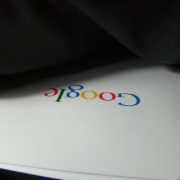Web Accessibility Law in Canada
by Toronto Internet Lawyer Gil Zvulony
“The power of the Web is in its universality. Access by everyone regardless of disability is an essential aspect.”
–Tim Berners-Lee, W3C Director and inventor of the World Wide Web
Introduction to Accessibility Law
As the internet becomes more important in our lives, and as more information and services become exclusively available on the World Wide Web, it is increasingly important to make websites easily accessible to all, including to people with disabilities. Many businesses, such as as Google, Yahoo, Amazon, eBay, exist primarily in cyberspace. Many of us rely on the world wide web to make our lives easier – we get our news; we buy our travel tickets; we communicate with our friends; we pay our bills – all from the comfort of our personal computer. For some of us, it is difficult to imagine how we survived before these services were available online. Unfortunately, many of the services available today on the internet and the World Wide Web are not accessible to groups of people with certain disabilities.
Some Typical Barriers
Information of the world wide web is accessed through user agents. A user agent is the software that a user runs to access documents on the World Wide Web. The most common type of user agent is a graphical web browser, such as Microsoft’s Internet Explorer or Mozilla’s Firefox. Other types of user agents are text only browsers, handheld browsers, and search robots.
Blind people typically use non-visual user agents such as screen-readers – software program that will read aloud the text of a webpage. People who are both blind and deaf may rely on user agents that convert the text of a webpage to Braille. These programs, by their very nature, work only with text; they do not read images.
Unfortunately, the content of many websites is not coded in a way that allows the multitude of user agents to access or make sense of the website’s content and structure. Many website’s are designed to display solely in a graphical web browser.
An example of this problem, is when information is conveyed using an image without an adequate text description. Imagine having to visit a business and not even knowing the name of the business. This can happen to blind people when a business logo is displayed on a website solely as an image without a corresponding text description.
Another example is when a website’s navigation menu uses an image as a button. Any words displayed in the image are not readable as text. Thus on an image button the word ‘home’ may indicate to the seeing person that clicking on the button will hyperlink the user to the home page. (Many web designer’s employ this technique to have strict control over the font type and font size that is displayed on the screen.) A person that can see will know that clicking on that button will take her to the home page. Unless there is alternate text, a person that relies on a screen reader will not know what the image means. A person who has trouble reading small text will not be able to enlarge the word in the image and thus may have trouble navigating through the website.
Another common problem is when web designer’s use only colour to convey valuable information or use low contrast colours. Some people have difficulty in distinguishing between colours. If a web designer has chosen to make all hyperlinks dark blue while regular text is light blue, some people may not be able to distinguish the hyperlink from the regular text.
There are several other common problems that render many web pages inaccessible to the disabled. Flickering on a screen can trigger seizures for some people. Other people have difficulty navigating precisely with a mouse. It is beyond the scope of this paper to discuss all the different barriers that some groups face on the internet. There are several excellent websites that discuss these issues in great detail. I have listed some at the end of this essay.
Simple Technical Solutions
The solutions to these problems are in most cases technically very simple. A redesign of the website is rarely necessary. For example, when using images, a web designer could simply include a line of text in the existing code describing what the image represents. The alternate text is usually not visible (and therefore does not interfere with the look or feel of the website), but it can be picked up by a screen-reader and thereby allows a blind user to know what information is contained in the images. Many websites already include some kind of alternate text (also known as “alt text”) as a matter of course, but too many others do not.
Web designer’s could make their hyperlinks underlined, bolded, italicized, bulleted, or another non-colour method of indicating a hyperlink.
The W3C Guidelines
A set of guidelines for web accessibility has been issued by the World Wide Web Consortium (W3C).
The W3C has created visual checkpoints for website designer’s to use to evaluate their website’s accessibility. Each checkpoint has a priority level based on the checkpoint’s impact on accessibility.
A web designer must satisfy all Priority 1 checkpoints to ensure that one or more groups do not find it impossible to access information in the document. Satisfying this checkpoint is a basic requirement for some groups to be able to use Web documents. An example of a Priority 1 checkpoint is to provide a text equivalent for every non-text element.
A web designer must satisfy all Priority 2 checkpoints to ensure that one or more groups will not find it difficult to access information in the document. Satisfying this checkpoint will remove significant barriers to accessing Web documents. An example of a Priority 2 checkpoint is to ensure that foreground and background colour combinations provide sufficient contrast when viewed by someone having colour deficits or when viewed on a black and white screen.
A web designer must satisfy Priority 3 checkpoints to ensure that one or more groups will not find it somewhat difficult to access information in the document. Satisfying this checkpoint will improve access to Web documents. An example of a Priority 3 checkpoint is to provide keyboard shortcuts to important links (including those in client-side image maps), form controls, and groups of form controls.
If after best efforts, an accessible page cannot be created then a designer should provide a link to an alternative page (i.e. a text only version) that is accessible and has equivalent information (or functionality), and is updated as often as the inaccessible (original) page.
The Law of Internet Accessibility
Making a website accessible may make good business sense, it may even increase a page’s ranking in the search engines, but does Canadian law require a website owner to make a website accessible?
The law applies to internet services just as it does to bricks and mortars businesses. As such, it is the position of this essay that Canadian accessibility laws apply equally to the internet and that internet services should be just as accessible and barrier free to the disabled as the law currently requires of bricks and mortar services.
The laws of most developed countries, including Canada, require that the disabled be given equal treatment as far as possible. This has been interpreted to mean that a place that is open to the public must make arrangements to ensure that disabled people are not unable to get in, or unable to use the services that the place provides. The question then becomes, how does this rule apply to websites, which provide services (information, ticket sales, banking transactions) but are not “places” in a physical sense?
The Bricks and Mortar Experience
The Canadian law of accessibility is derived from many sources. One of these is section 15 of the Charter of Rights and Freedoms, which states that “every individual is equal before the law” and that one of the prohibited grounds of discrimination is “physical disability.”
Another source is sections 5 and 6 of the Canadian Human Rights Act, which state that access to goods, services and facilities must not be denied to any individual on the basis of a prohibited ground of discrimination.
In Ontario, section 1 of the Ontario Human Rights Code, states that every Ontario resident is entitled to equal treatment as regards the provision of goods, services and facilities. All of this means that if you provide goods or services to the public, you must provide them equally to all people, and not deny them to someone on the basis of their disability.
The law does not deal to any great extent with intention; the Canadian Human Rights Act, for example, states that discrimination is unacceptable whether it is practiced “directly or indirectly.” There need not be an intent to discriminate as long as the effect of the practice is to create discrimination. Doing something that causes people with disabilities to be denied services is as unacceptable as directly refusing to serve people with disabilities.
What is “Undue Hardship”?
The Ontario Human Rights Commission’s Policy and Guidelines on Disability and the Duty to Accommodate provides a guide to the exceptions to the rule of accessibility. In brief, where a provider of goods or services is found to be discriminating against disabled people, the onus is on that person to prove that it would constitute undue hardship (a high financial burden or some other kind of unreasonably high cost or effort) to make the business fully accessible to the disabled.
Some Hardship is Acceptable
The test for undue hardship is not set in the legislation, nor has it been set in stone by any court ruling. The basic point about undue hardship is that it does not mean inconvenience, or expense, or difficulty. The Supreme Court of Canada has said in Central Okanagan School Dist. No. 23 v. Renaud (1992), 16 C.H.R.R. D/425 (S.C.C.), The use of the term ‘undue’ infers that some hardship is acceptable.
The service provider must show that making the necessary accommodations would actually, genuinely hurt the operation of the business. As to what the standard is for undue hardship, the Supreme Court had a good summary in Régionale de Chambly, Comm. scolaire v. Bergevin, (1994), 22 C.H.R.R. D/1; the decision was about employment discrimination, but the point applies equally well to service discrimination:
The situations presented will vary endlessly. For example, in a large concern, it may be a relatively easy matter to replace one employee with another. In a small operation replacement may place an unreasonable or unacceptable burden on the employer. The financial consequences of the accommodation will also vary infinitely. What may be eminently reasonable in prosperous times may impose an unreasonable financial burden on an employer in times of economic restraint or recession.
How, then, does the law of accommodation and undue hardship play out in Canadian decisions about the provision of services? There have been a number of cases where courts and/or tribunals have ruled that a place of business, such as a movie theatre, is obligated to provide access for the disabled, and that doing so almost never constitutes “undue hardship.”
A landmark Canadian cases to deal with the accessibility issue is the Saskatchewan Court of Appeal’s ruling in Saskatchewan Human Rights Commissionv. Canadian Odeon Theatres Ltd. 18 D.L.R. (4th) 93, 6 C.H.R.R. D/2682, [1985]. The only options the movie theatre in question offered wheelchair bound people was to either be transferred from their wheelchairs into a seat, or to sit in a wheelchair and watch from an uncomfortable position in the theatre.
The ruling was that even though no one was literally denied access to the movie or the theatre, there was still discriminations simply on the basis of lack ofdesirable access; Cameron J.A. wrote that the movie theatre was acting discriminatorily:
by offering to the general public a variety of desirable places in which to sit and enjoy the movie, while offering to Mr. Huck only a single, undesirable place from which to do so because he was confined to a wheelchair.
Thus there is not even a requirement that someone be barred from using the service, merely that the quality of service offered be inferior to that offered to the general public.
Courts and tribunals in Canada tend to be reluctant to accept the defence of undue hardship. For example, the Ontario Human Rights Commission inTurnbull v. Famous Players Inc., [2003] O.H.R.T.D. No. 10, rejected a movie theatre’s too-vague (not backed up by specific financial evidence) argument that accommodating the disabled would hurt them; the Board also pointed to the Supreme Court’s decision in Central Okanagan, where Sopinka J wrote that [t]he use of the term “undue” infers that some hardship is acceptable.
Essentially, then, there is what amounts to a very strong presumption that failure to provide equal access, and equal quality of access, amounts to a violation of Canadian Human Rights law.
Another such case was Brock v. Tarrant Film Factory Ltd. (2000), 37 C.H.R.R. D/305 (Ont. Bd.Inq.) In that case, patrons of an independent movie theatre in Newmarket, Ontario had to walk up several stairs to get in; there was no wheelchair ramp nor any other way of getting in to the theatre for people who could not climb stairs. The evidence showed that the theatre had failed to put in a wheelchair ramp not because it was unduly difficult or expensive, but because it was simply “not a priority.” The tribunal ordered that the theatre was to spend $60,000.00 to make the theatre wheelchair-accessible! This despite the fact that the owners of the theatre were worried about pending competition from a multiplex that threatened to drive them out of business.
Clearly, then, the test for undue hardship is very stringent. A business can be ordered to go to the expense of making itself accessible. In the Brock case, $60,000 was, according to the testimony, the most the theatre could afford. In Brock, the fact that the Tarrant Film Factory could not afford the expense in the future was not relevant compared to the fact that they should have been doing it at the time they denied access to Brock.
Undue hardship, it seems, is defined as something that would have directly resulted in putting a business out of business at the time of the behaviour complained of; nothing less – not inconvenience, not even some degree of financial hardship – is likely to be acceptable to a court or tribunal.
Are Non-Essential Services Exempt?
Does the type of service provided have an effect on the decision as to how accessible that service needs to be? Is there a distinction between essential services and non-essential services?
It does seem that the law does not make a distinction between these types of services. After all, many of the most high-profile accessibility cases have involved movie theatres, which do not provide services that can be viewed as “essential.” Instead they are providing mere entertainment – and yet they are just as liable for violations of accessibility standards as a government building or a courthouse.
However, there is a standard that is sometimes used in deciding the degree of accessibility that is required; this is what might be called the public servicestandard. The Canadian Human Rights Act stipulates in s. 5 that a service customarily available to the general public
must not be denied to an individual on a prohibited ground of discrimination. Therefore, if the service denied is one that is customarily available to the public, it becomes more likely that its denial to disabled people will constitute discrimination. On the other hand, if the service is one that is restricted to the public in some way, then it might be seen as less of a public service than a service that is routinely offered to the general public.
For example, the Supreme Court of Canada in Gould v. Yukon Order of Pioneers (1996), 25 C.H.R.R. D/87 (S.C.C.) ruled that it was acceptable for a club to bar women from becoming members. The focus of Justice Iacobucci’s judgment was the difference between membership and services. The services which the club provided to the public, such as the distribution of information, was done without discrimination. What was discriminatory was the decision about who could be a member, and who could participate in the provision of that service – but membership in a private club was not something that had to be offered on a purely non-discriminatory basis. The rule, then, is that if a service is provided to the public, it must be provided to everyone without discrimination as far as possible. If an organization offers a private, restricted thing, such as membership, discrimination may be easier to justify as long as there is some kind of reason given for the decision to discriminate.
Also, as mentioned in the above excerpt from the Supreme Court’s decision in Bergevin, a small business may, at least theoretically, be given more leeway than a large business; the small business cannot necessarily afford the same kind of accommodations that the large one can make. However, as the Brockcase shows, there is not, in practice, a great deal of leeway given to small or independent businesses; tribunals tend to rule for the individual complainant against the business, even if the business does not happen to be a large or powerful one. Still, it is doubtful that a small business would be ordered to spend the same amount of money on renovations as a large one.
Website Accessibility Laws
As of now (March 2005), Canada has absolutely no jurisprudence regarding the issue of website accessibility. As such, any discussion of how a Canadian court or tribunal would treat web accessibility must be based on Canadian case law relating to bricks and mortar situations and on the jurisprudence of other jurisdictions.
The issue of web accessibility has been judicially considered in other countries. These other countries have differently-worded legislation on the issue of accessibility in general, so it is important to take careful note of the differences between the legislation these cases are interpreting and the legislation which will be interpreted in any future Canadian cases on the issue.
UK Experience
In the U.K., the Disability Discrimination Act 1995, Ch. 50, s. 19 (Eng.) actually mentions “access to and use of means of communication” as something that must be provided equally; this provision, which was added in 1999, has been interpreted by England’s Disability Rights Commission to apply to websites (see Disability Discrimination Act (DDA) & web accessibility). This has not yet been tested in court, however, nor has it been tested whether providing access for the blind would create undue hardship.
Australian Experience
Australia’s Disability Discrimination Act contains a similar provision, saying that “telecommunications” count as services, and its application to website accessibility has been tested.
The Australian Human Rights and Equal Opportunity Commission made a ruling on this issue in Maguire v SOCOG (24 August 2000). Bruce Maguire brought a complaint against the Sydney Organizing Committee for the Olympic Games (SOCOG) over the inaccessibility of its website, OLYMPICS.COM. Large portions of the site were graphics-only with no text equivalent, and therefore inaccessible both to a conventional screen reader and the refreshable Braille display that Maguire used. Many of the links on the main page were identifiable only as images; people with sight would click on the picture that represented the sport they wanted to read about. With no alternate text, this was not an option available to blind people.
SOCOG countered that making its site immediately accessible would cost too much and that this constituted unjustifiable hardship. They also pointed out that some of the images on its site had been outfitted with alt text; they argued that the reason not all of the site was accessible was that the W3C’s accessibility guidelines were too new to have been fully implemented in so short a time. They also claimed that the site was not a service in the commercial or informational sense, but was merely a promotional tool and therefore not covered by the Disability Discrimination Act. Finally, they argued that blind people could access the necessary information by typing in the full URLs of the sports they wanted, and that therefore the information was not truly inaccessible.
The Commission ruled that the website did constitute a service under the Disability Discrimination Act, and that furthermore its purpose was not merely promotional; the decision said that:
The provision of the Web site was a service relating to the provision by the respondent of information relating to the largest and most significant entertainment or recreation event in the history of this country.
The Commission also ruled that the site was not so “substantially complete” as to make it an undue hardship, or indeed any particular hardship at all, to revise the site: the site “is and has been in the process of continual development,” and contrary to what SOCOG was arguing, the amount of time and money required to make the site accessible would actually be fairly modest. Essentially the Commission found that SOCOG had offered an over-inflated estimate of the cost of accessibility as a cover-up for the fact that it “never seriously considered the issue.” Having been surprised with the complaint about accessibility,SOCOG attempted to argue that achieving web accessibility was a much more difficult task than it actually was.
The result of the decision was that SOCOG was ordered to add alt text to all its images, as well as linking directly from the main page to some important informational sections. When SOCOG failed to do so by the appointed time, it was instead ordered to pay $20,000 restitution to Mr. Maguire.
United States’ Experience
In the United States, there have been several lawsuits against the publishers of websites, on the basis that lack of accessibility is a violation of the Americans With Disabilities Act. Many cases have settled out of court.
A setback for the movement to recognize website access as being covered by such legislation occurred in 2004, in Access Now, Inc. v. Southwest Airlines Co.., 385 F.3d 1324, when the 11th Circuit Court of Appeals upheld a lower court’s decision that the Americans With Disabilities Act did not apply to the failure of the defendant, Southwest Airlines, to make its site fully accessible to blind users. The lower court had ruled that the legislation only applied to access to “physical spaces,” not the internet.
It is important to note that the appeal was primarily decided on procedural grounds, and the court left open the possibility that in a different case, they might find that the legislation applied.
Judge Stanley Marcus wrote that “in declining to evaluate the merits of this case, we are in no way unmindful that the legal questions raised are significant.” So the question of website access remains open in the U.S., and it seems possible that a future case might change matters.
Web Accessibility Law in Canada
And so we come to the basic overriding question: when Canada’s law of accessibility is finally applied to the internet, what is the result likely to be, based on the state of Canadian accessibility law and the emerging law of internet accessibility around the world?
The most important precedent here is the Maguire v SOCOG decision. However, there are some difficulty with applying it directly to Canadian law. First of all, the legislation it is based on – the Australian Disability Discrimination Act – more clearly applies to the internet than more generalized legislation like that found in Canada. As previously noted, the preamble to the Australian Disability Discrimination Act states that the legislation applies to “telecommunications,” which is generally interpreted to include the internet. The application of the Canadian human rights legislation is not as clearly set out, and it is possible, though perhaps not likely, that it could be interpreted to apply only to physical spaces, the way a lower court interpreted the Americans With Disabilities Act in the Southwest Airlines case. Updating existing human rights legislation could easily clarify this issue.
Second, the Maguire decision was at least partly based on the fact that, in the words of the judgment, “SOCOG is a major agency supported by considerable financial infrastructure including Government funding.” This made it very easy for the Commission to decide that it was within SOCOG’s power to make its site accessible without undue hardship. The decision does not necessarily indicate what might happen if a website owner without many financial resources – and many website owners fall into that category – is sued for having an inaccessible website. Nor does the decision give much indication of whether one type of service is expected to be more accessible than another.
Still, applying these principles to Canadian law on accessibility, there is little reason to think that the nature of the service, or even the size of the business, will be a major factor in accessibility decisions. True, most websites provide information, and the Supreme Court has not ruled out the possibility that “separate but equal” access to information could be acceptable. (Specifically, the Supreme Court ruled in Eaton v. Brant (County) Board of Education (1997), 142 D.L.R. (4th) 385 (S.C.C.) that schools for disabled people only were acceptable if that was a way to provide the type of education that would best serve the students’ needs.) But the fact remains that no court considers a total lack of access to information to be “equal treatment” in any sense of the term. A website without alt text, and without serious attempts to conform to the W3C guidelines, is a site that denies access to a group or groups of peoples.
The Supreme Court’s decision in Yukon Order of Pioneers, to the effect that membership need not be as equally provided as public services, might be relevant to the law of web accessibility. Many websites require that users register and obtain membership before using some of the services or getting some of the information provided by the site. But since members-only services are not necessarily subject to the same rules as services provided to the general public, there might be more leeway here for a site whose membership process is not accessible to the visually impaired.
However, it is doubtful that this exception, if it is an exception, would go very far; the Yukon Order of Pioneers case specifically said that information that is provided for free to the public must be provided on an equal basis, and so one would assume that if a site’s membership is free, and the information is free once the user has registered, then making it difficult to register would in itself be a form of unacceptable discrimination.
One part of the Maguire decision which could be even more easily applied to Canada is the decision regarding the time frame required for a claim of undue hardship. The Commission declared that even if it really was too hard for SOCOG to make its website accessible now (which, in the Commission’s opinion, it was not), the relevant point was that it would not have been unduly hard for them to make it accessible at the time they received Maguire’s original complaint: “It is the making of the complaint which activates the inquiry not only in relation to the issue whether there has been discrimination but also whether hardship can be relied upon.”
This is similar to the decision in the above-mentioned Brock v. Tarrant case, where an Ontario Human Rights Board of Inquiry decided that even though the respondent movie theatre was currently about to be driven out of business, what mattered was that they should have made accommodations at the time of the complaint: “I conclude that both cost and the anticipated Famous Players sixteen-screen complex were factors. However, this finding will not determine the question of whether Film Factory accommodated David Brock to the point of undue hardship at the time of the complaint in 1995.”
In other words, Canadian law already recognizes that undue hardship is based on circumstances at the time of the complaint, not at the time of the hearing – and SOCOG has applied this principle to the law of web accessibility.
In some ways, then, one could speculate that it may become even easier for people to win a discrimination complaint against websites than against conventional businesses and services. The point of accommodating the disabled is to make all the accommodations possible within the limitations imposed by the disability, and short of undue hardship. In a store or a movie theatre, such accommodation may cost a lot of money and require a lot of renovation; yet such places are usually expected to go through with it, even (as we have previously seen) when there is some doubt as to whether they can truly afford it.
The cost of “renovating” a website, on the other hand, is typically very low compared to the cost of putting in new seats in a theatre or installing a wheelchair ramp. And with the programs now available to the visually-impaired, such as screen readers, it may only take a few small changes in a website to make it convenient and usable for users with disabilities. The bottom line is that if tribunals usually do not consider an expensive and time-consuming renovation to be “undue hardship,” they will not be likely to consider it “undue hardship” to provide a link to an alternative page (i.e. a text only version) that is accessible and has equivalent information (or functionality), and is updated as often as the inaccessible (original) page.
Conclusion
A website owner would be well-advised to take some basic steps to make it more accessible to the disabled, steps such as using alt text for images or providing a text-only version. Those contracting for the provision of web design and web development services should address issues of accessibility and conformance to the W3C guidelines and checkpoints in their agreements.
Certain websites are arguably a more important and vital part of daily life than movie theatres are. It seems likely that if Canadian law expects a theatre owner to put in a wheelchair ramp, it likely requires a website owner to take the trouble to make it accessible to the disabled.









